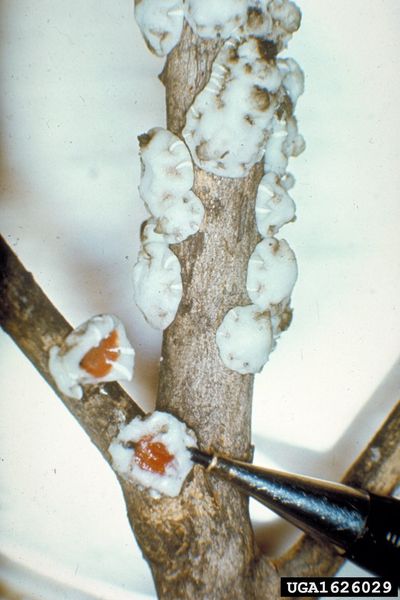Pests on a Clove Tree
Clove trees are small trees, also called tropical myrtle, and are native to the Molucca Islands. They are usually grown for cloves, their unopened flower beds. Most cultivated cloves are used by the tobacco industry to flavor cigarettes. Some cloves are cultivated for use as cooking spices, either whole or in powder form. Those who grow clove trees have to deal with a variety of clove tree pests. The most damaging pests on a clove tree in the field are stem borers. While the trees are in the nursery, scale insects are very serious clove tree pests. Stem Borers: The stem borer (Sahyadrassus malabaricus) is considered the most serious pest of clove in India. It is usually found in plantations that are near forest clearings. Stem borers are not bugs that eat cloves themselves, but the clove trees. Adult females lay eggs on weeds around the clove trees. Stem borer larvae then feed on the bark of young clove trees near the soil, girdling the trees before boring into the roots. You can tell that the girdling is done by the stem borer pests on a clove tree if you look closely at the area. Stem borers leave frass, coarse particles of wood, in the wounds. Trees infected by these pests will lose their leaves. In time, the infected trees will die. You can fight these bugs by clearing out the frass and using quinalphos 0.1% around the wound and infected into the bore hole. Prevent this problem by keeping the clove tree area free of weeds. Scale Insect Pests: Scale insects are clove tree pests that attack seedlings and young plants, especially those in a nursery. You may see the following scale insect pests: wax scale, shield scale, masked scale, and soft scale. How do you spot these pests of clove trees? Scale insects cluster on tender stems and the bottoms of leaves. Look for yellow spots on leaves, leaves dying and falling, and tree shoots drying up. Scale insects feed on clove tree sap. You can control these pests by spraying dimethoate (0.05%) on the affected areas. Other Clove Tree Pests: Hindola striata and Hindola fulva, both sucking insect species, are believed to transfer a bacteria that causes Sumatra disease in clove trees. The bacterium causes trees to die within three years, with wilting beginning in the crown. There is no known treatment that will prevent this disease from killing the tree. The use of an antibiotic, oxytetracycline, injected into the tree, may slow decline.
